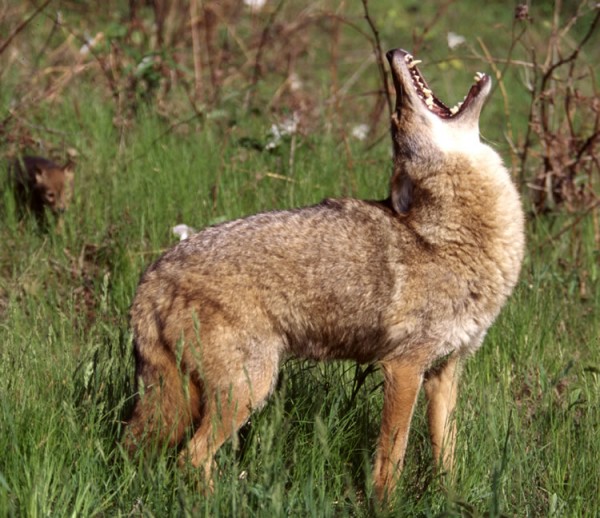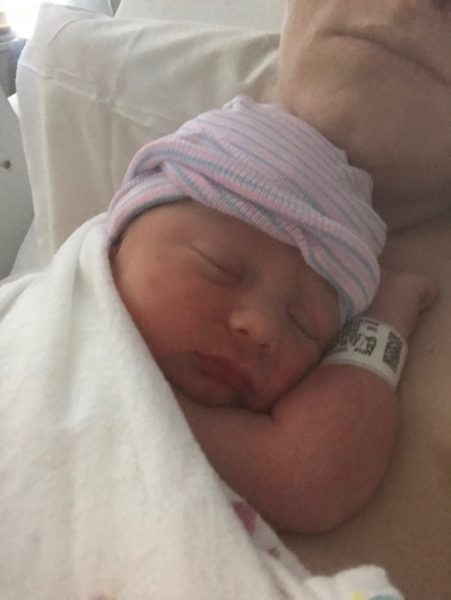This morning, I think Erik woke me up. Well, actually, I was awake physically and mentally, but I was in that purgatory where I wasn’t emotionally read to spring out of bed. I usually spend a good 15 minutes trying to muster up the will power to face the day far from the comfort of the insides of my eyelids and the excitement of my sometimes crazy dreams. In that emotional tug of war, I felt someone pocking on the front of my left thigh. I raised my head to look, expecting to see Bella or Scout, but nothing. Zip. I flopped my head back on my pillow, and the same thing happened again. And again. And again. So I groaned and said, ‘Okay, okay, Erik! I’ll get up,’ and I did. Reluctantly.
I had a comment from someone the other day about the overall tone of the blog. She said it was a little too “happy-go-lucky,” and I could understand why she thought that given that she lost her child only this past February. At the beginning, the blog was definitely heavier. My grief was very deep, and its tone reflected that. Now, my grief has eased, and I mostly just miss Erik, physically, so the tone is more light hearted. It conveys a hope that our relationships with our loved ones never have to end. But don’t let this lighter tone deceive you. My heart is still broken. I’m still broken to a certain degree, and my thoughts wander to that horrific day, that horrific sight, every single day. I know I’ll never be completely happy, and that’s okay. I’ve accepted it and will continue to try to turn my lemons into lemonade. One a lighter note, let’s see what Erik has to say in Part Two of our series on animals.
Me: What about spiritual missions? Do [animals] have spiritual missions, like contracts just like we do for our human experience? Do they have “the animal experience?”
Erik: Oh, hell, yes they do!
Me: Really? Like what would be an example of a contract or spiritual mission they would have?
Erik: Let’s go back to domestic dogs. A dog being with the family, let’s say the job was to help its parent companion get through cancer, help them with unconditional love, compassion, tell them to lose weight, teach them how to be a friend. There are a lot of these qualities. Of course it’s not about coming in to help them monetarily or to have kind of a more human experience. When we look at animal human experience, it’s really based on emotional communication, emotional enhancement, about—
(Pause)
Jamie (To Erik): Say it one more time.
Erik: About understanding the intelligence behind emotional purpose.
Jamie: Does that make sense?
Me: Yeah!
She whispers the phrase under her breath.
Me: What about another type of canine like a coyote? What kind of contracts or spiritual missions might they have? They don’t interact with human beings, so…
Erik: Well, they interact with other life forms like trees, insects, the ecosystem, Mother Earth—all of these have a desire for balance, and remember that balance is not 50:50. Balance occurs when everything is cohesive and is working to fulfill everybody’s needs.
Me: Okay.
Erik: Fifty percent frogs and 50% deer doesn’t necessarily mean balance.
Jamie: I don’t know why—
Me: Yeah, I don’t know why he went off on that tangent.
Jamie: Random!
Erik: With coyotes, we can look at their contract being to balance the ecosystem. Some coyotes, the urban coyote—
Jamie: We have those, actually. They’re in my backyard, and I live in midtown Atlanta.
Me: Really?
She nods her head.
Me: Oh, wow! That’s crazy.
Jamie: I thought there was a baby left in my backyard one night, and I flung open the door and went out, and there were three coyotes standing there.
Me: How cute!
Jamie: They’re not as pretty as I expected them to be.
Me: Me too. They always look smaller than I expect. I keep thinking they’re supposed to be as big as a wolf, but they’re not.
Jamie: Yes! I think that’s what I had, too, and they weren’t.
Erik: I like urban coyotes because most of their contracts are about unity, acceptance, co-existence, right? Because they’re not marching in to say, “Hey, here I am. Wild creature. Kill me!”
Me: Yeah.
Erik: They’re looking for balance.
Jamie: He kind of turned the corner and started talking about something else.
Erik: If we look at any wildlife creature from Sahara to jungle, their natural instinct isn’t force. It’s really not about attacking. They attack when they’re being pushed. They attack when they feel like they’ve been misplaced or their environment is being aggressive with them or if you’re being aggressive with them. In nature, there’s a lot of harmony. It’s based on harmony. That’s how it thrives. (He leans toward Jamie and whispers) Until your stomach starts to growl. Then things aren’t in harmony anymore.
Me: Uh oh. Is your stomach growling?
Erik: No. It’s when the animal’s like, “You know, I’m hungry. I’m going to go out there and kill ya so I can eat ya.” Still, that’s a level of life cycle and harmony.
Me: Okay. Well, can they come back as humans, sometimes, and can humans come back as animals?
Erik: Yes. I stand by my word. Any life force energy can come back as any living being.
Me: Okay. Interesting. So you can come back as a tree if you want to.
Erik: Yes!
Me: That’s cool. What about guides? Do they have guides, spirit guides, just like we do?
Erik: Yes, but I don’t want people to get caught up into thinking that spirit guides are only in human form.
Me: Oh yeah. Okay.
Erik: You know, because when we look at Earth, we go through that intelligence thing, food chain, shit like that where humans are always, “Woo hoo! We’re at the top! Yay us!”
I laugh.
Erik: And to be a guide, you must be human: “Yay, us!” That’s not how it goes over here.
Me: Okay, so you could have a coyote spirit guide. We can probably have animal spirit guides, too, huh?
Erik: I was going to share with you that a coyote can have a turtle guide or a person guide.
Me: Wow.
Erik: Or an alien guide.
Me: Well, those are all spirits. They’re not incarnated, so they’d just be a spirit, not a coyote or turtle. Okay. So basically, you have a spirit that could be any life form if it wanted and that can be your guide.
Jamie mimics Erik by nodding her head.
Me: Okay, what about thought creating reality? We do that. You do that, Erik. Can animals create reality with their thoughts?
Erik: Absolutely. They manifest a hell of a lot easier than we do!
Me: Oh really?
Erik: Yeah because we’re so focused on hearing communication from somebody else and taking it as truth rather than looking at “Where are they coming from,” and “What are they really conveying, which is their feeling?” Animals don’t pull that shit. They have a more authentic way of communication. So, with that being said, when they’re trying to manifest something, their playing field is a hell of a lot cleaner without a lot of weeds. But with humans, we like to put a lot of weeds to mask or hide something out of fear of being attacked, put down or shamed our out of a fear of being too prideful, too good. So there’s all that shit that gets in the way. Animals don’t really have that.
Me: Okay. Interesting. One more question about animals. How did it go when you met our little pets like Zoe and Peanut and—well Peanut and Penny crossed after you, but how was it seeing Zoe when you crossed over, Erik?
Jamie (smiling): He thought you were going to ask if animals crossed dressed. He was a little disappointed that you came up with this question, instead.
I laugh.
Me: You can answer that if you want to!
Erik: No, Mom, Mom. Since you asked it, I’ll answer.
He fakes an air of disappointment.
Erik: It was surprising. I like that word because once you’ve seen all your dead family, you’re kind of catching on to, “I’m going to see everything that’s died.” What you don’t catch onto is that your pets can now communicate to you. It’s no longer, “The dog says, ‘Woof,’ and the person says, ‘Hi.’” All of a sudden, you’ve got the same language. That was the surprise.
Me: Wow.
Erik: I was quick to ask the “How are you? What do you think? How long have you been here? What are you doing?” just wanting to understand what was going on, but each of my pets that I came across were quick to let me know who they were in relationship to me and what our contract was in live, and they were also quick to show me what I didn’t understand in our relationship. Like, I was really disappointed to find that what I thought was funny to do to them—to spook them, tease them, run after them—it was really fucking funny to see them jump up and get all crazy and “Yay, it’s all fun!” but they weren’t having the same experience. For them, it was almost like sometimes being hunted, like when they didn’t know I was coming up behind them or coming around the corner or just yelling at them and them not understanding why. They didn’t have the same humor that I had. It didn’t translate into the way that I wanted it to. I definitely would have changed the way I interacted with animals. I wouldn’t humanize them, by any means, but I would definitely look more at what their needs are compared to what kind of environment I’d provide for them.
Me: Very nice! That’s a good place to end off unless you have anything else to add, baby.
Erik: Just that I love you!
Me: I love you, too.
And miss him.
If you want to see if your question was answered in the first Ask Erik column, check out the Sedona Journal of Emergence. It’s in the Predictions 2016 edition. This is s great publication. You can subscribe or buy the single copy January 1st.
Here’s another stellar review for Erik’s book, My Life After Death:
This book is the real deal. That’s a difficult concept to grasp for some, since the subject is about death and life after death. I am fairly well-read on this subject so it was not difficult for me. It was informative and comforting. It gave me a more concrete idea of the process of death and what “day to day” life is like. I put that in quotes as there is no linear time in that dimension so cannot be measured (that’s still a difficult concept to grasp). Erik pretty much covered all aspects from his own death process to what he does in the afterlife. I highly recommend this book. It gave me great comfort to really know what it is like over there and how this relates to my deceased husband.
–WoolyBlue




